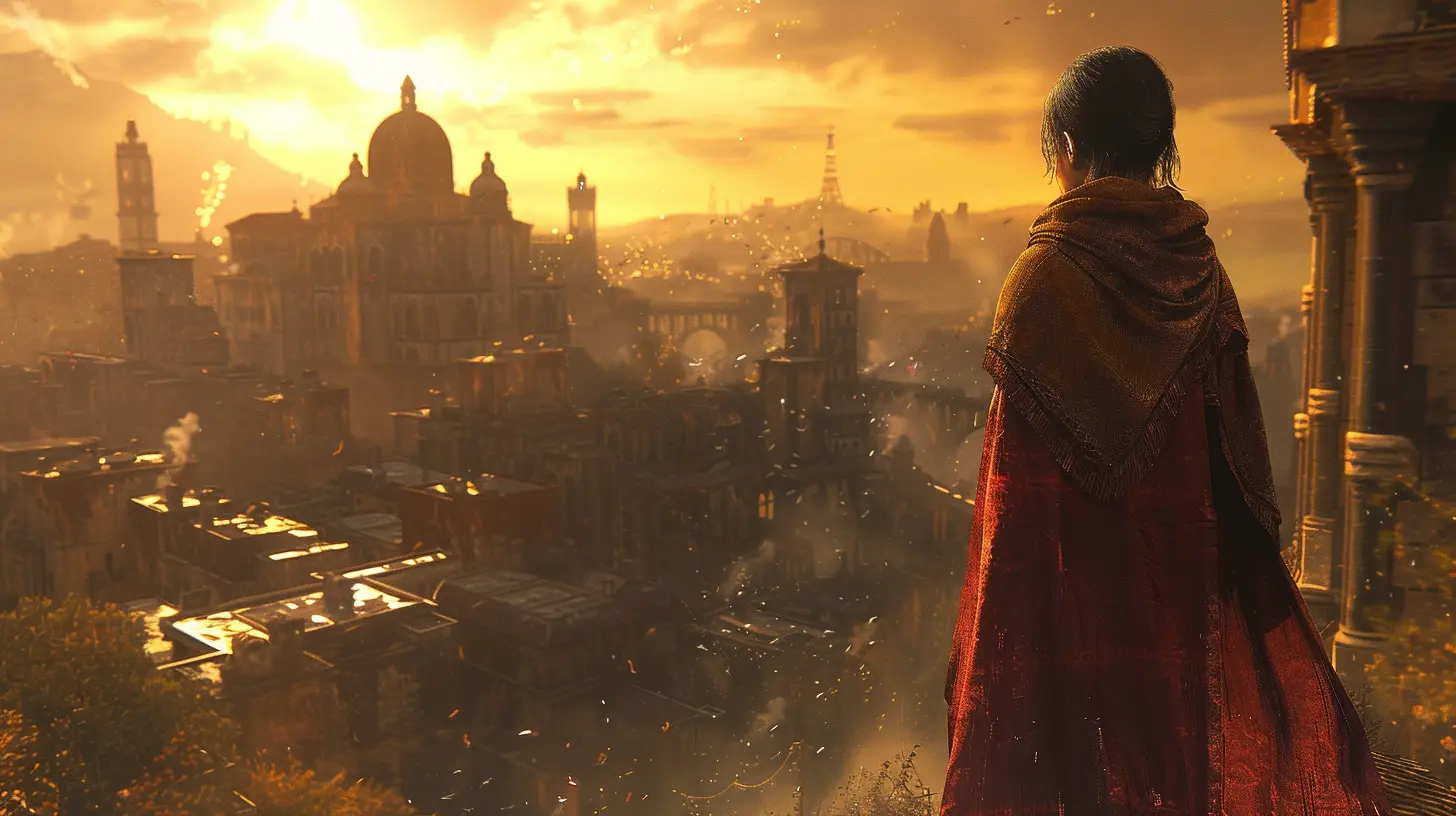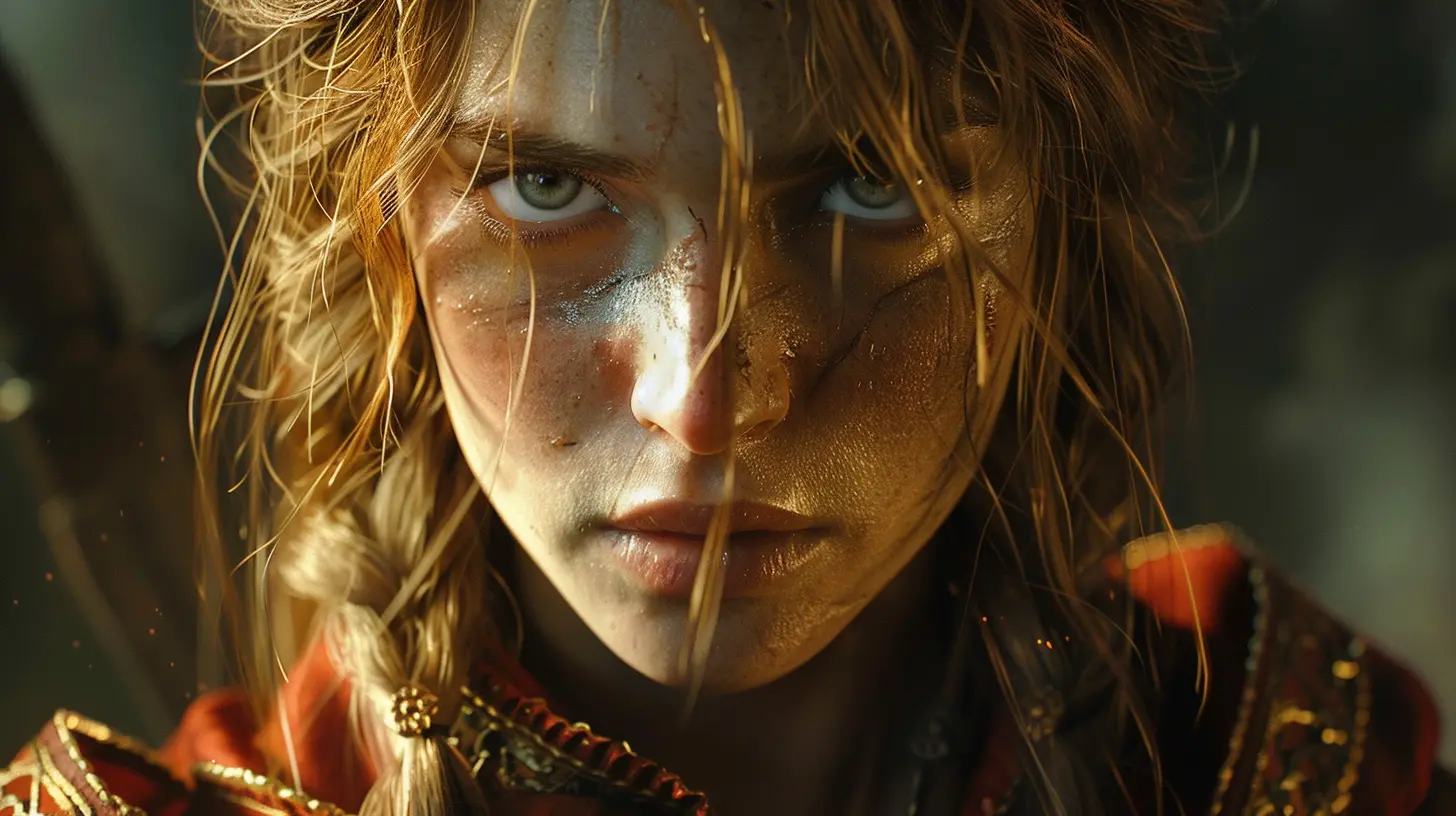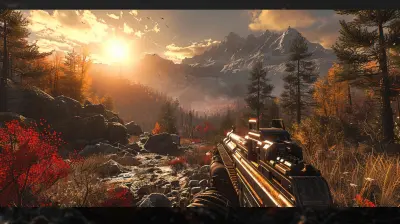Capturing Authenticity: Real-World Inspirations for Game Voices
12 September 2025
Let’s face it—video game voices aren’t just voices anymore. They’re the soul of the characters, the spice in the story, and sometimes even the reason you spend hours replaying your favorite quests. Ever found yourself quoting a game character as if they were your best buddy? Yeah, I’m looking at you shouting, “Fus Ro Dah!” in the shower. That’s what happens when game developers nail authenticity. But how do they do it? It's not like they just walk into a recording booth, grab a random dude off the street, and say, "Okay, now give me 'battle cry of a 10th-century Viking!'"
Turns out, creating authentic game voices goes way beyond shouting into a microphone. It’s a wild process of borrowing inspiration from the real world, crawling through people’s quirks, and finding that perfect voice to make fictional characters come alive. So, grab some popcorn (or chips, no judgment), and let’s dive into the nitty-gritty world of how video games capture real-world vibes for their voiceovers.
Why Do Game Voices Need to Feel Authentic?
First off, let’s ask ourselves: why is authenticity such a big deal? I mean, can’t we just slap on any voice and call it a day? Spoiler alert: Nope. Gamers today are eagle-eyed—or, well, eagle-eared. We can spot a phoned-in voice performance faster than you can rage-quit a boss fight. If the voice doesn’t match the character’s vibe, the whole story feels off. Imagine Kratos from God of War sounding like a chipper stand-up comedian. “Boy, did you hear the one about the shield maiden?” Yeah, I didn’t think so.Authenticity adds depth. It makes you believe in the character’s struggles, celebrate their victories, and even shed tears when they die (RIP, Ghost from Modern Warfare). A good voice can turn a simple NPC into a fan-favorite. So, how do developers pull off this magic? They dig deep into the real world—because as it turns out, real-life inspiration is the secret sauce.
Step 1: Listening to Real People (Yes, That Includes Eavesdropping)
Developers and voice teams are basically professional people-watchers. They’ll listen to random conversations at coffee shops, subway stations, or wherever human beings congregate. Creepy? Eh, maybe a little. But also genius. Why? Because reality is messy, unpredictable, and oh-so-human.Take accents, for example. When video games like The Witcher pull off regional dialects, it’s not because they Googled, “How do Polish people sound?” They hire actors who embody those accents—or they immerse themselves in the culture to understand the little nuances. You know how sometimes you hear a fake accent and instantly cringe? Yeah, they’re working hard to avoid that moment.
And it’s not just the accent; it’s the rhythm of speech. People don’t talk in perfect sentences all the time. We pause, stutter, and throw in “uh” and “like” more often than we’d like to admit. Capturing that human imperfection? That’s when a character really starts to feel real. 
Step 2: Drawing From History and Mythology
Real-world history and myths are like the cheat codes for creating believable voices. Game developers often dig into historical records, ancient texts, and folklore to sculpt their characters. If a game’s set in the Viking era, you better believe someone on the dev team spent months listening to Old Norse reconstructions. These people have the patience of saints—and I, for one, am grateful.One of the all-time greats who nailed historical voice vibes? Assassin’s Creed. The series has transported us everywhere from Renaissance Italy to ancient Egypt, and the voices always feel on-point. Why? Because they pull from the languages, cadences, and expressions of the time. They’re not just slapping Hollywood accents on ancient figures like Cleopatra and calling it a day. They go all-in—and that dedication shows.
Step 3: Voice Actors Bring the Magic
And now, let’s give a virtual round of applause to the real MVPs: voice actors. These folks don’t just “read lines.” They breathe life into characters. A good voice actor can make or break a game. Seriously—imagine The Last of Us without Troy Baker (Joel) or Ashley Johnson (Ellie). You can’t, can you?Voice actors prepare by diving deep into their roles. Think of it this way—they’re not just reading a script; they’re becoming the character. They ask questions like: “What’s this character’s backstory? How would they react under stress? Do they slurp soup obnoxiously, or do they sip it quietly?” (Okay, maybe not the soup part, but you get the idea.)
Many voice actors also bring personal experiences to the table. For example, an actor might draw from their own anger or heartbreak to nail an emotional scene. This is why authentic performances hit so hard—they’re grounded in real emotions.
Step 4: Motion Capture and Voice Fusion
Ever watched behind-the-scenes footage of actors wearing those absurd-looking mocap suits? Yeah, those are motion capture suits, and they’re low-key revolutionary. Games like Uncharted and Red Dead Redemption 2 use a mix of mocap and vocal performances to make characters move and sound authentic.Why does this matter? Because body movements actually influence how we sound. Think about it—when you’re slouching on the couch, your voice is different compared to when you’re standing tall and animatedly telling a story. Mocap lets actors physically perform scenes, which means their voices match the energy of the moment. So, that epic swordfight doesn’t just look cool; it sounds like it’s ripping straight out of real life.
Step 5: Leveraging Real Emotions
Let’s be real—fake emotions are easy to spot. Ever heard a character “cry” in a game, and it sounds more like someone stepped on a squeaky toy? Yeah, that’s a no-go. To avoid this, developers encourage voice actors to tap into genuine emotions.Sometimes, this involves method acting. Fun fact: during the recording of Hellblade: Senua’s Sacrifice, actress Melina Juergens was tasked with portraying a character grappling with psychosis. To bring authenticity to Senua, Juergens went through extensive research and even worked alongside mental health professionals. The result? A gut-punch of a performance that leaves anyone with a soul weeping into their controller.
When Things Get Weird: Sound Design Magic
Okay, but what about non-human characters? You didn’t think developers left out dragons, aliens, or robots from this convo, did you? Spoiler: they don’t. Sound designers get super creative when voicing non-human characters, often blending real-world sounds with human voices.Take Smaug in The Hobbit movies (yeah, not a game, but stay with me). They combined Benedict Cumberbatch’s deep, menacing voice with rumbling growls to create something that felt both intelligent and beastly. Games like Mass Effect and The Legend of Zelda do similar things. They layer human voices with animal noises, machinery, or even oddball items like squeaky chairs to add depth to alien language or creature roars. It’s like the audio version of Frankenstein’s monster—but way cooler.
The Payoff: Connection (Yes, Even With Pixels)
At the end of the day, all this effort—eavesdropping on conversations, hiring the best voice actors, sticking actors in mocap suits, and layering growls—is about creating a connection. When a game voice feels real, it pulls us into the story. We stop seeing pixels and polygons and start seeing, well, people.This is why we love characters like Arthur Morgan from Red Dead Redemption 2 or Geralt from The Witcher 3. They’re not just voiceovers; they’re fully fleshed-out human beings (or Witchers, you get the point). And that’s what separates a decent game from a game that stays with us forever.
So, What’s Next for Game Voices?
We’ve come a long way from the days of stiff, monotone NPCs that sounded like your old math teacher. As technology evolves, so will the authenticity of game voices. AI is even starting to dip its toes in the mix, but let’s all agree nothing beats a real human voice overflowing with emotion. (Sorry, robots, we’re just not there yet.)Until then, the world of gaming will keep pulling from reality, adding soul to every character we meet along the way. Because at the end of the day, nothing’s more compelling than a story told by a voice that feels real.
all images in this post were generated using AI tools
Category:
Voice Acting In GamesAuthor:

Aurora Sharpe
Discussion
rate this article
1 comments
Jonah Valentine
Great read! I love how you highlighted the importance of real-world inspirations in game voice acting. Authentic performances can truly enhance immersion and emotional connection. It would be interesting to see examples of specific games that successfully implemented this approach and the impact it had on players’ experiences. Keep it up!
September 26, 2025 at 3:27 PM

Aurora Sharpe
Thank you for your thoughtful comment! I appreciate your interest in specific game examples, and I’ll consider including them in future discussions. Authenticity truly makes a difference in player immersion!

